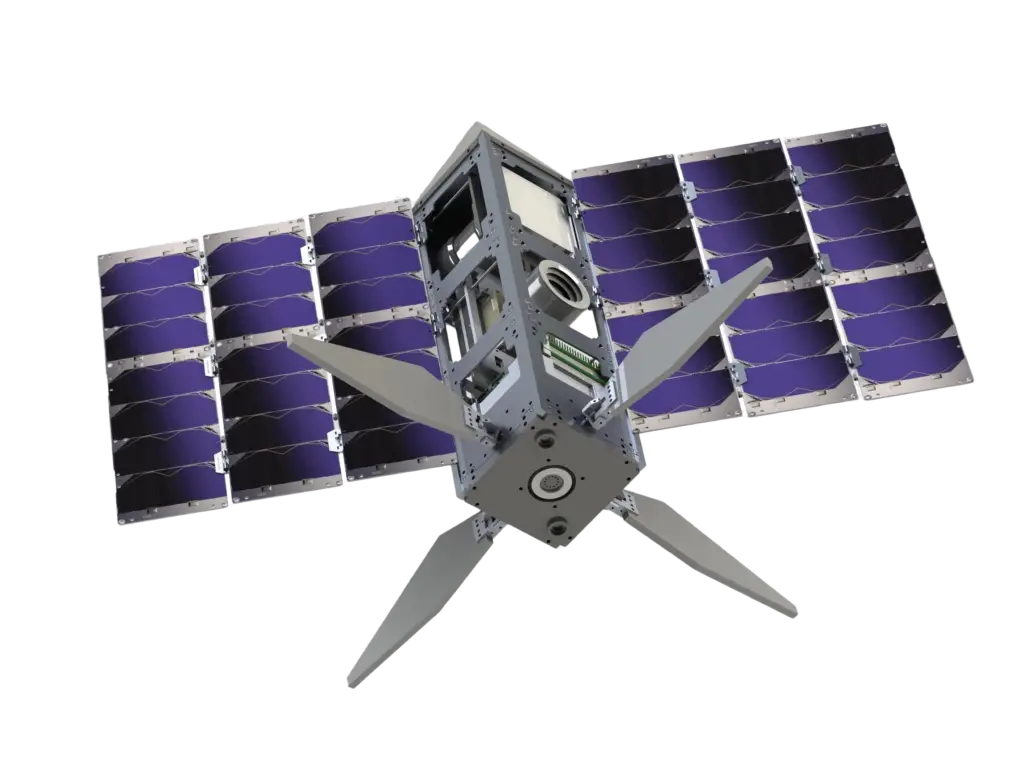Your payload in Very Low Earth Orbits
LEARN HOW YOUR PAYLOAD CAN OPERATE FROM VLEO
WHAT IS CAPTIS?
Today’s satellites are reaching their performance limits. Enhancing them requires making them larger and more complex.
As a result, satellites become more expensive and harder to launch due to limited rocket availability, or performance compromises must be made.
So how can we reduce satellite costs and time-to-launch without sacrificing performance? CAPTIS, together with the Aerospace Institute of the Technical University of Dresden, is working on a previously unused approach: shifting satellites to the Very Low Earth Orbit (VLEO). To achieve this, we use a new approach to aerodynamic attitude control. Our simulation software can adapt this control system to any CubeSat format, enabling maximum payload flexibility.

BENEFITS OF VLEO
01
LOW-COST
- low cosmic radiation in VLEOs enables the use of commercial off-the-shelf components
- small satellites are more cost-efficient to launch and operate
02
PERFORMANCE
- shifting from LEO to VLEO results in significant improvements in the resolution of Earth observation data, signal-to-noise ratio (STNR), latency, and transmission rates
- for example a 4x better STNR for optical earth observation, a 16x better STNR for SAR applications, double the resolution for earth observation, and half the latency time for communication can be achieved

03
CLEAN
- there is no danger of space debris
- after its lifetime, Captis satellites will disintegrate in the earth’s atmosphere
04
RESPONSIVE
- available commercial-off-the-shelf components, small satellites, and high agility predestine VLEO CubeSats for responsive use
- the system is based on the CubeSat standard, which enables versatile applications
- widely available rideshare-launches enables short from-earth-to-orbit times
LATEST NEWS
CAPTIS carried out Successful Test Campaign
CAPTIS has completed its first major test campaign, marking progress toward operating CubeSats in Very Low Earth Orbit (VLEO). By studying how incoming atmospheric particles interact with control surfaces—a key for aerodynamic attitude control—the team exposed materials to hypersonic flow in a VLEO simulation chamber. The results will refine simulations and control algorithms, moving CAPTIS closer to VLEO operations.
Pioneering Aerodynamic Attitude Control for VLEO CubeSats
Our aerodynamic attitude control system for VLEO CubeSats earned us the LABX and FOSTER grants. With this support, we were able to successfully test the attitude control over an extended period, confirming its reliability. We’re now preparing for further evaluations in simulated space conditions to advance our project to the next stage.
CREW
WHO is captis
Hi! We are CAPTIS Space Systems, a team of young engineers with the vision to bring a piece of Dresden’s engineering art into space. Space has become an invisible but indispensable part of our everyday life. Just as invisible, however, is the space debris that poses a constant threat to our space infrastructure. Striving for a sustainable solution, we have set ourselves the goal of designing CubeSats for Very Low Earth Orbit, a previously unused orbit.
Our satellite is therefore not a normal spacecraft, but enables a variety of new applications, limited only by your own imagination.




